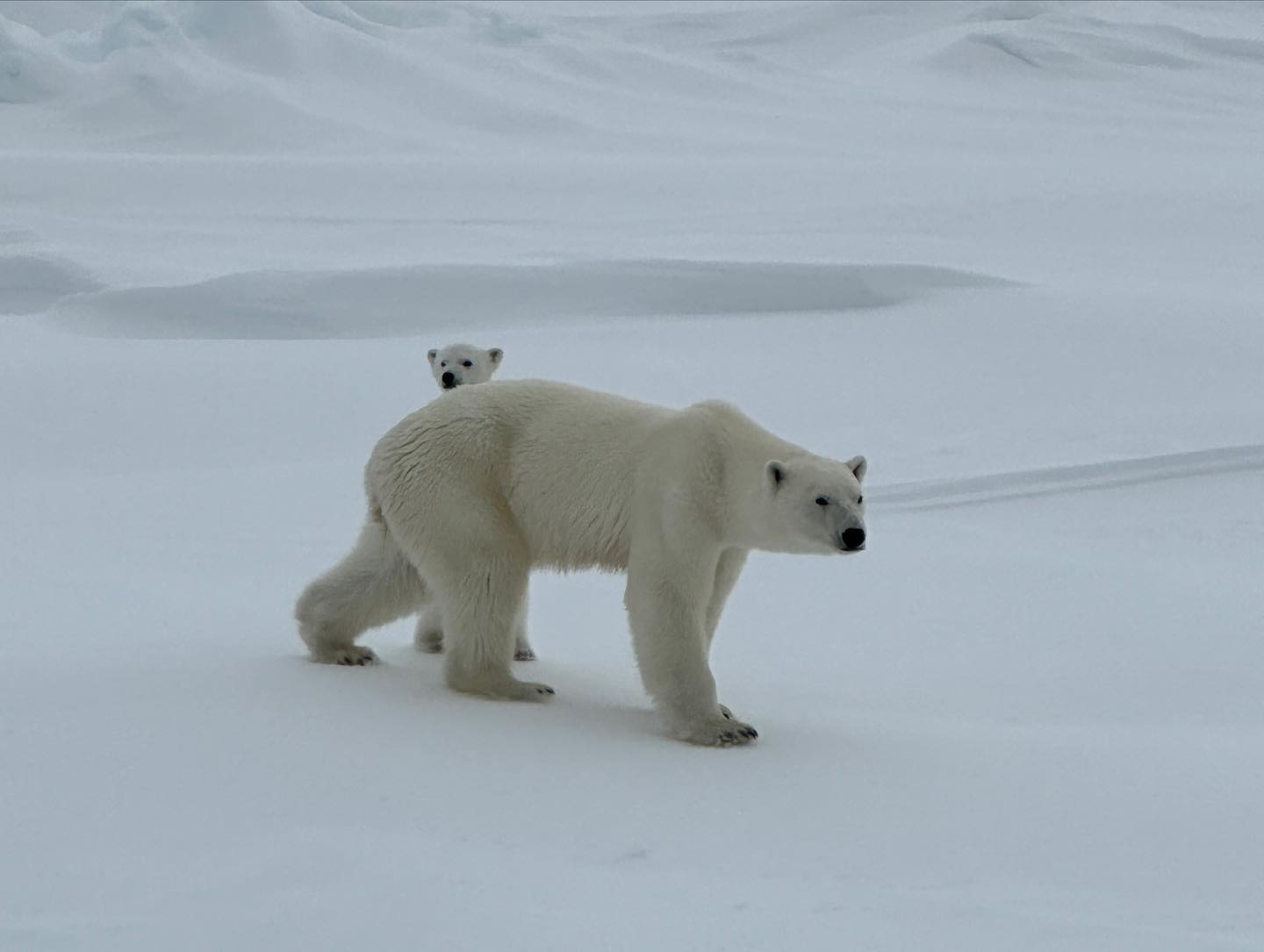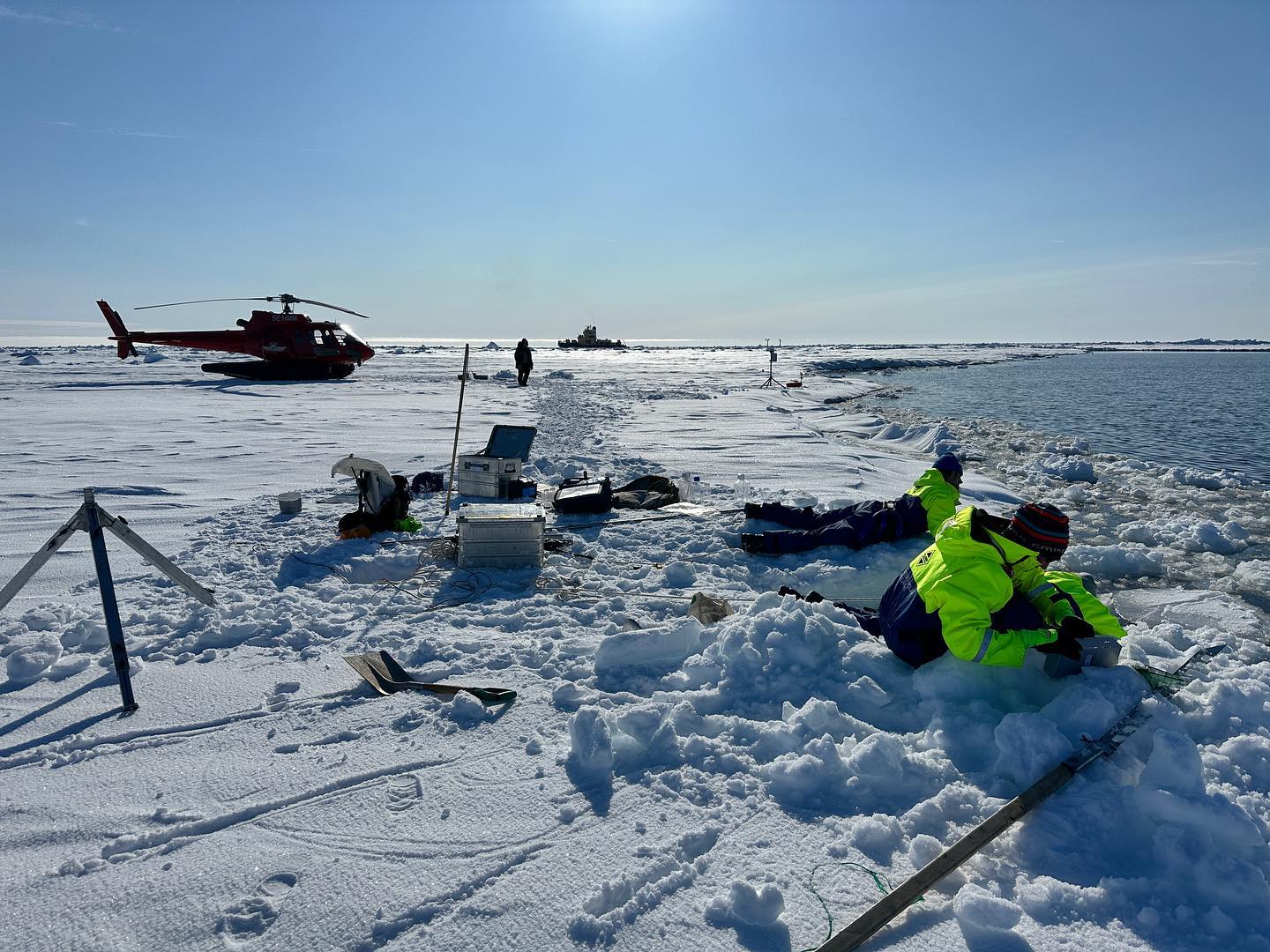by Dr. Jessie Creamean
Meltdown
The Arctic is warming more than four times faster than anywhere else on the planet. This is due to feedbacks between the warmer air and frozen surfaces like sea ice, where as Earth warms, the reflective sea ice shrinks, exposing the darker ocean surface. This darker surface enhances the warmer air temperatures – an effect called Arctic amplification. Now throw clouds, aerosols, and warm air coming from midlatitudes into the equation, and we have a complicated problem.


ARTofMELT
The 6-week ARTofMELT2023 (Atmospheric rivers and the onset of Arctic melt) expedition in May – June 2023 on the Swedish Icebreaker Oden had a goal in mind of studying warm air events called “atmospheric rivers” that bring things like moisture and aerosols from lower latitudes, both necessary components to forming Arctic clouds. The expedition was led by the University of Stockholm, but included an international team of 38 scientists from 10 nations. May and June is when the sea ice naturally starts to melt due to the transition into 24 hours of sunlight, but the main hypothesis for ARTofMELT was that the warm air events might trigger the melt to happen earlier and faster.
Data Collection
To test this hypothesis, our team headed north on Oden into the Arctic sea ice to study meteorology, clouds, aerosols, gases, oceanography, snow and sea ice properties during the spring-to-summer transition season when these events could trigger the melt onset. There were hundreds of measurements on the icebreaker with additional scientific instrument sites on the sea ice near Oden.
We needed to conduct measurements at ice stations only accessible by helicopter to be able to take samples and measurements of air seawater, sea ice, and snow at different locations and under a wide range of sea ice conditions. These stations were on the edge of ice floes (a sheet of floating ice) to measure sea spray aerosols coming off the ocean surface in large cracks of open water called leads. These aerosols are being tested for their capabilities to help Arctic clouds form and their properties are being compared to particles found in the water, ice, and snow to assess if these local features are sources of the aerosols. The local aerosols are being compared to aerosols that were transported during a warm air event that occurred later in the expedition.


Challenges
Each helicopter ice station involved setting up and taking down the equipment after 4-5 hours of working on the ice. We could not leave the equipment on the ice overnight as the ice floes can move, crack, and crush into each other, so risk of damage and even loss of the equipment was too high. Additionally, polar bears tend to think of scientific equipment as toys, and can destroy them. This was quite a risk at ARTofMELT, as we saw 31 polar bears from Oden. A few of the bears did damage some equipment on the ice near the icebreaker. Fun to watch—unless you are the owner of the equipment!

Another challenge with remote ice station work is that the equipment has to be light and can only operate on small batteries due to the limited cargo capacity on the helicopter. The aerosol package included a filter sampler that operated off a small gel battery. In order to confirm the aerosols were coming off of the leads, local meteorological measurements were needed. This is where the 3D-PAWS came in. With its ability to run off a very small battery and its lightweight nature, it was perfectly suited for the job. 3D-PAWS collected air temperature, humidity, and winds at 12 ice stations. These data are vital to evaluating the complete picture of where local aerosols come from and under what conditions they are emitted from open water. We can then compare them to aerosols and meteorology on the ship, under “normal” and warm air event conditions.
The Real Work Begins
While the expedition is sadly over, the bulk of the work is beginning. The scientists involved are busy back at their home institutions, analyzing samples and processing the data collected from instruments like 3D-PAWS. Next comes interpretation of the data and testing the hypothesis of the warm air events triggering melt onset. This process will take years, but we hope these very unique and detailed observations will be used to improve climate model predictions of warm air events and sea ice melt, and thus, weather and climate in the Arctic.
jessie.creamean@colostate.edu